Hagia Sophia Thessaloniki – the Church of Holy Wisdom – is one of the most magnificent Byzantine churches in the city. It’s also one of Thessaloniki’s major landmarks and orientation points, set in its own large plaza in the center of downtown. As with some other Byzantine Churches in Thessaloniki, the level of the city streets has risen around it over the centuries. The square is now sunken below street level, making Hagia Sophia Thessaloniki – alternatively called Agia Sofia or Agia Sophia – a serene oasis in the city center. Hagia Sophia Thessaloniki is a UNESCO World Heritage Site, one of 15 throughout the city of which 13 are Byzantine churches.
The History of Hagia Sophia Thessaloniki
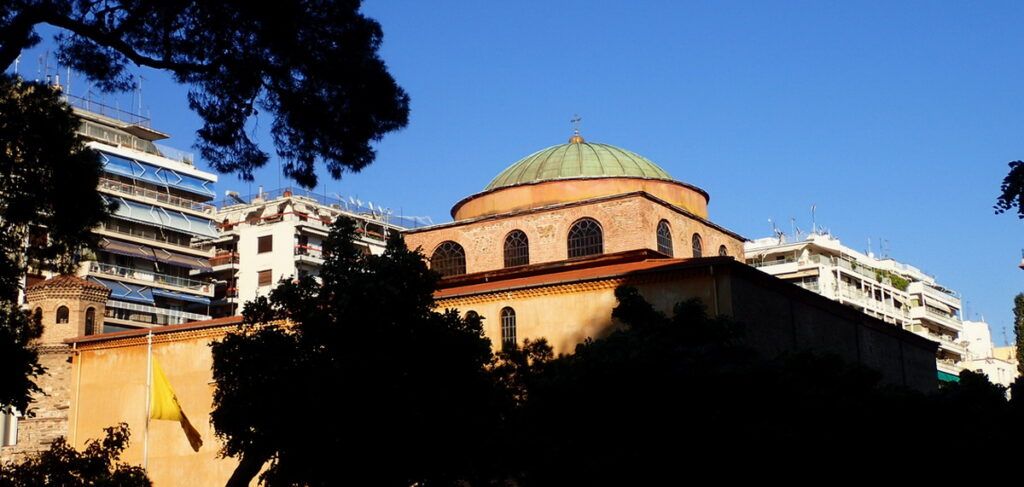
Hagia Sophia Thessaloniki dates, by most accounts, from the 8th century – specifically to the reign of Emperor Leo III Isavros (714 – 741). Like Agios Dimitrios, this was not the first church on the site. There was once a large basilica of five aisles here, dedicated to St. Mark, but this was destroyed in an earthquake in 620. The beautiful baptistry of St. Mark is still visible though, preserved in the sunken gardens of Ayiasma – Holy Spring – of John the Baptist. You can find it just across the road from the sanctuary of Agia Sophia, to the south.
This area was the administrative center of Byzantine Thessaloniki. Hagia Sophia was the Cathedral Church of the city for centuries, with the exception of a brief period (1204 – 1224) of Frankish occupation, when it was used as a Catholic church.
The Ottomans conquered Thessaloniki in 1430. But all Christian churches didn’t become mosques right away. Hagia Sophia Thessaloniki became a mosque in 1524 (by other accounts 1585). When this became the mosque of Ayia Sofia, an arched portico was constructed on the front, a minaret was added in the south, and a tower to the northwest corner.
There was a large fire in 1890, and Hagia Sophia suffered a lot of damage. The Ottomans had it restored in 1908-1910. Then in 1912, Thessaloniki was liberated and Hagia Sophia returned to Christian worship. The Minaret and the porch were removed, while the base of the tower in the northwest corner – with its distinctive ogee arch – remains. Now the only remaining minaret in Thessaloniki can be found at the Thessaloniki Rotunda, which had been the church of the Archangels before being converted into a mosque in 1591.
In the great fire of 1917, which so badly damaged Agios Dimitrios, Hagia Sophia was unscathed, sheltered from the flames by the large courtyard.
Hagia Sophia Church
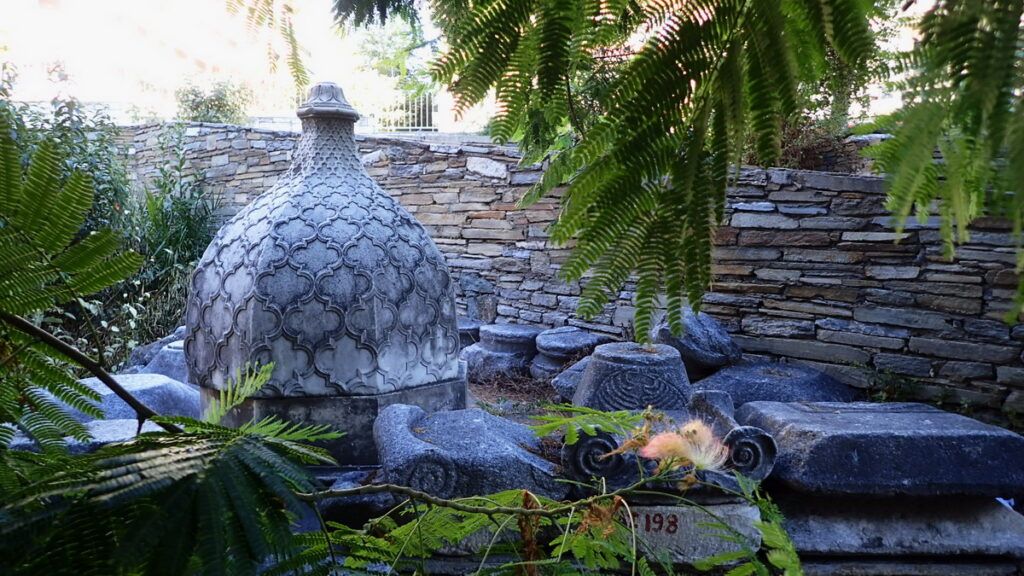
Like Hagia Sophia of Istanbul, Hagia Sophia Thessaloniki unites two types of churches. Almost a square, it combines the spatial elements of both the domed basilica and the cross-in-square type, a style typical of the middle Byzantine period. The effect is dramatic. Passing through the decorative narthex, you meet a grand approach through the central nave, coming to the dome. The dome – like that of Hagia Sophia in Istanbul – rests on a ring of windows, making it appear to hover weightlessly above.
Hagia Sophia Thessaloniki Mosaics
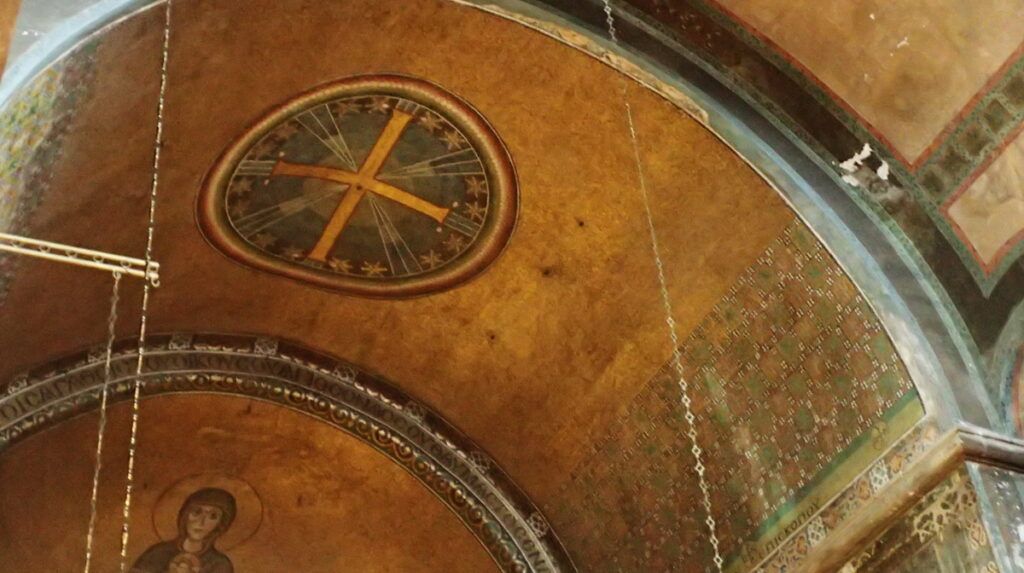
Hagia Sophia Thessaloniki was built during the first of two periods of iconclasm in the Byzantine church. This means that there was no figurative decoration. We see this in the simple cross on a blue background, which is in the arch between the dome and the apse. The apse originally also had a simple cross – traces of it are sometimes visible if the light is just right. In the 11th or the 12th century, this was covered with mosaic of the Virgin and infant Jesus we see today.
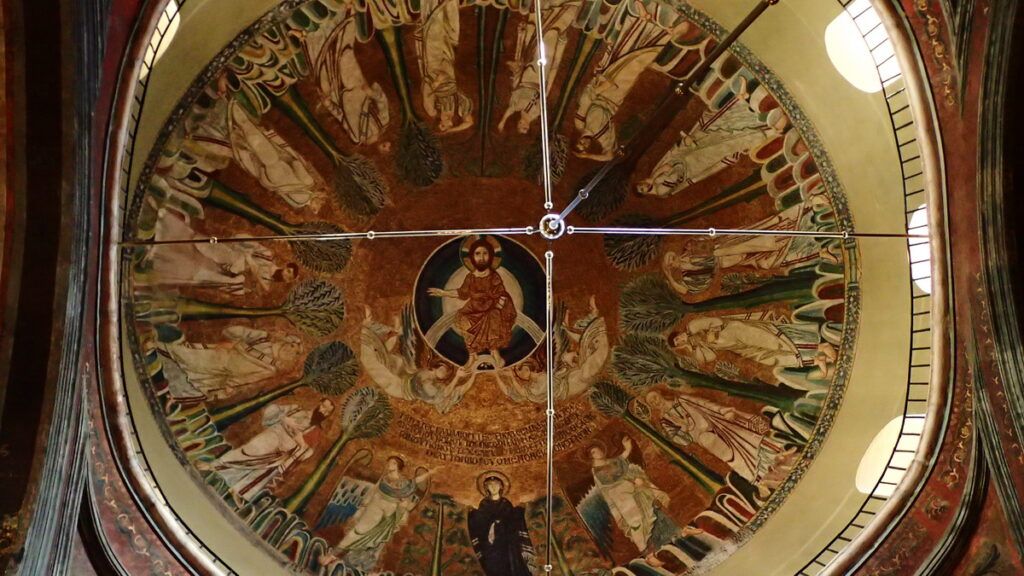
The dome of Hagia Sophia Thessaloniki is really spectacular. In addition to the beautiful weightless effect of hovering above a string of windows, it has a splendid late 9th century mosaic. The mosaic depicts the ascension of Christ. In the top of the dome, Christ is seated on a rainbow, as angels bear him heavenward. The Virgin Mary is below, flaked by angels. All around the dome are the twelve Apostles. The figures are expressive; they look on with awe, each with an individual expression. Trees separate them. Above the angels is inscribed Acts of the Apostles 1:11: “Men of Galilee,” they said, “why do you stand here looking into the sky? This same Jesus, who has been taken from you into heaven, will come back in the same way you have seen him go into heaven.”
Hagia Sophia – Columns
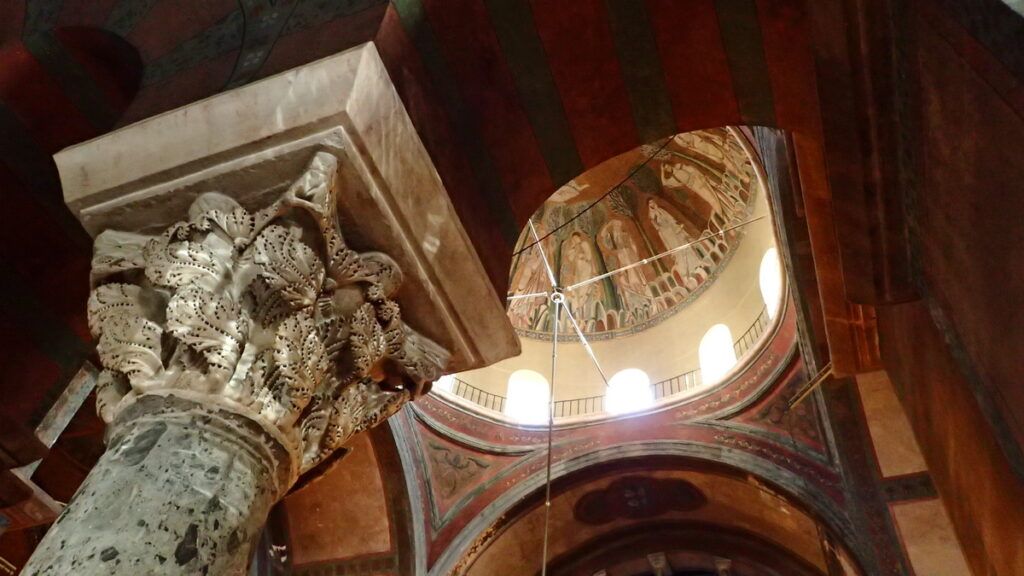
Although the Church of Hagia Sophia dates from the 8th century, the capitals on its columns from the 5th century. They are most likely saved from the previous church that was on this site, destroyed by the earthquake of 620. The columns are Theodosian – an elaborate order similar to Corinthian, with a deep relief. The capitals in Hagia Sophia Thessaloniki have two rows of wind-swept acanthus leaves, to dynamic effect. On the north colonnade the capitals are original, while on the south side of the nave and in the galleries, they’re reproductions.
Another style of Theodosian capital – with a more abstracted and intricate botanical motif – can be seen at the Panagia Acheiropoietos.
Hagia Sophia Thessaloniki Restoration
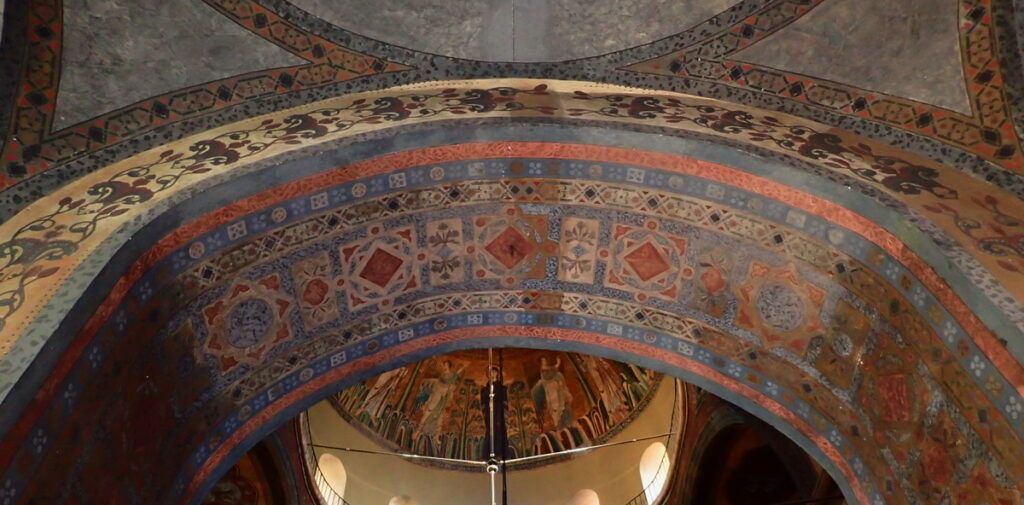
The interior of Hagia Sophia is unlike that of most of the other Byzantine churches of Thessaloniki. There is more abstract decoration, and a different palette of cool, quenching jewel tones.
After the fire of 1890, while it was still a mosque, the Ottomans invited a noted historian and authority on Byzantine Art. to restore Hagia Sophia. The historian was the Frenchman Charles Diehl, and near Hagia Sophia, you’ll find the street “Karolou Dil” named in after him.

He used botanical motifs that reflected the original decor. The lower portions of the walls are covered with skillfully painted tromp l’oeil marble. In this way – like in its overall shape – Hagia Sophia Thessaloniki also mirrors the Hagia Sophia of Istanbul. The Fossati Brothers – the Swiss architects who restored Hagia Sophia among over 50 monuments in Istanbul – used tromp l’oeil extensively in their work on Hagia Sophia
Hagia Sophia Thessaloniki is in Hagia Sophia Square at Ermou Street, just below Egnatia. Open Daily, 7:00 – 20:00

